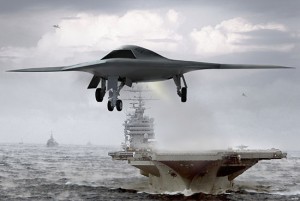For aircraft pilots, or just fans of the movie Top Gun, the world you've come to know and love is changing. While pilots go through difficult and competitive training to become some of the best navigating the sky, their seats may be filled by something else: robots. With new advances in technology, UAVs are finding increasing relevance within naval aviation, and are potentially changing the game.
Although still in the research and testing stages, UAV's like the X-47B are trying to prove their relevance--and the benefits are kind of hard to ignore. It strengthens what the military calls "attribute persistence" which basically allows for the plane to track targets and stay in the air longer because it eliminates our human needs. With block cameras and sensors, these unmanned aircrafts in theory would be able to avoid collisions with other planes in the air, and be able to identify air-borne and grounded targets. Only through contact with controllers would the UAV be able to release weapons.
This is all well and good, but being that this is part of naval aviation landing on aircraft carriers would seem important right? What good is an unmanned plane if you can't get it back to where it needs to be? Well, it's important to remember that while UAVs don't require a human in it, there are still humans on deck. Air traffic controllers and naval officers can all aid in guiding the plane to safe landing. The difference is that instead of talking through radio, they would use digital commands instead.
An F/A-18D did a flight to test their deck landing abilities, and it was ruled a success. It landed perfectly on the Eisenhower, affirming beliefs that this new age in aviation is in fact looking promising--looks like the sky really is the limit.

